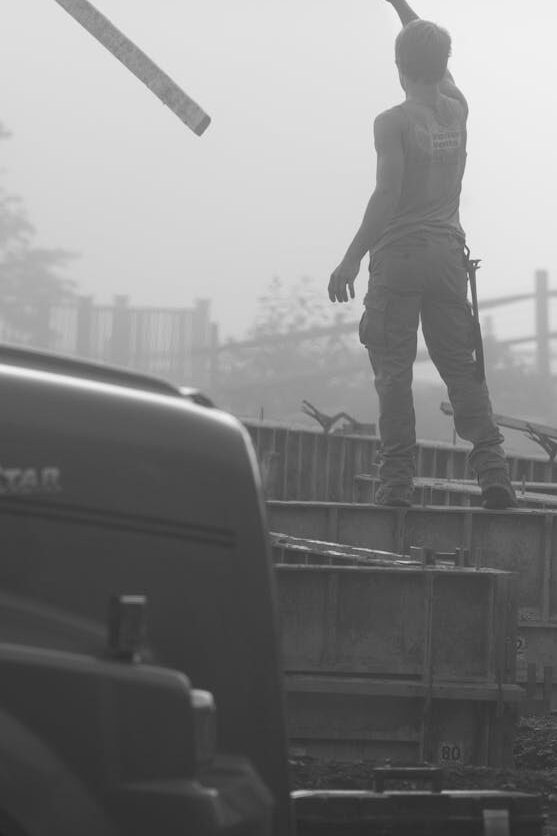
Formwork Hazards and Control Measures
Introduction
Formwork is a critical component in construction, providing the necessary support for concrete structures until they achieve adequate strength. However, improper formwork handling can lead to serious safety hazards, including collapses, falls, and material failures. This document outlines the primary hazards associated with formwork and the control measures required to mitigate these risks.
Common Formwork Hazards and Their Control Measures
1. Collapse of Formwork Structures
Hazard:
- Formwork structures may collapse due to improper installation, inadequate bracing, or overloading.
- Weak connections and insufficient support systems increase the risk of failure.
Control Measures:
- Ensure formwork is designed, installed, and inspected by qualified engineers.
- Conduct regular structural inspections to identify weaknesses.
- Use proper bracing, tie-backs, and shoring to enhance stability.
- Avoid overloading by following weight limits specified by engineers.
2. Falls from Heights
Hazard:
- Workers may fall from elevated platforms or open edges of formwork.
- Unstable work surfaces increase the likelihood of slips and falls.
Control Measures:
- Install guardrails, toe boards, and safety nets on elevated work areas.
- Provide workers with personal fall protection systems (harnesses and lanyards).
- Ensure proper access to elevated formwork using ladders and scaffolding.
- Conduct regular safety training on working at heights.
3. Struck by Falling Objects
Hazard:
- Loose tools, materials, or debris can fall from elevated formwork, hitting workers below.
- Unsecured formwork panels or supports may collapse unexpectedly.
Control Measures:
- Use tool lanyards to secure equipment when working at heights.
- Install protective barriers, debris nets, and catch platforms to prevent falling objects.
- Implement exclusion zones below active work areas.
- Enforce the use of hard hats and other personal protective equipment (PPE).
4. Exposure to Hazardous Substances
Hazard:
- Workers may be exposed to chemical form-release agents, leading to skin or respiratory irritation.
- Dust from concrete mixing and pouring can cause lung diseases if inhaled.
Control Measures:
- Use low-toxicity form-release agents and ensure proper ventilation in confined areas.
- Provide workers with personal protective equipment (PPE), such as gloves and respirators.
- Implement wet-cutting or dust suppression methods to minimize airborne particles.
- Train workers on safe handling and disposal of hazardous substances.
5. Manual Handling and Ergonomic Risks
Hazard:
- Lifting, carrying, or positioning heavy formwork components can cause back injuries and muscle strain.
- Poor ergonomic design of workstations increases physical stress on workers.
Control Measures:
- Use mechanical lifting aids such as cranes, forklifts, and hoists for heavy materials.
- Train workers on safe lifting techniques and team lifting procedures.
- Design workstations and workflows to reduce excessive reaching, bending, and twisting.
- Rotate workers between tasks to minimize repetitive strain injuries.
6. Electrical Hazards
Hazard:
- Electrical tools and equipment used in wet conditions can cause electric shock or electrocution.
- Contact with overhead power lines poses a significant risk during formwork erection.
Control Measures:
- Use only insulated and waterproof electrical tools rated for construction environments.
- Install ground fault circuit interrupters (GFCIs) to prevent electrical shocks.
- Maintain a safe distance from power lines when erecting formwork structures.
- Train workers on electrical safety and proper use of equipment.
7. Collapse of Concrete Structures Due to Formwork Failure
Hazard:
- Inadequate formwork support can lead to sudden collapse of freshly poured concrete.
- Excessive load on formwork before curing weakens structural integrity.
Control Measures:
- Ensure formwork supports are strong enough to bear the full weight of wet concrete.
- Control the pouring rate to prevent overloading.
- Perform real-time monitoring of pressure loads during concrete placement.
- Conduct a thorough inspection before pouring to confirm structural stability.
Conclusion
Formwork operations pose multiple risks that must be effectively managed to ensure worker safety. By implementing proper control measures, such as fall protection systems, structural inspections, and the use of mechanical aids, the likelihood of accidents can be significantly reduced. Regular training, adherence to safety protocols, and continuous monitoring of formwork stability are essential components of a safe construction environment.
Ensuring safety in formwork operations not only prevents injuries but also enhances overall productivity and efficiency on construction sites.
Common Hazards in Construction Sites and How to Mitigate Them
Batching Plant Hazards and Precautions | Free Download PPT
Monsoon Safety Plan for Construction Site
Safety Engineering in Construction: Managing Risks and Ensuring Compliance
Safety hazard